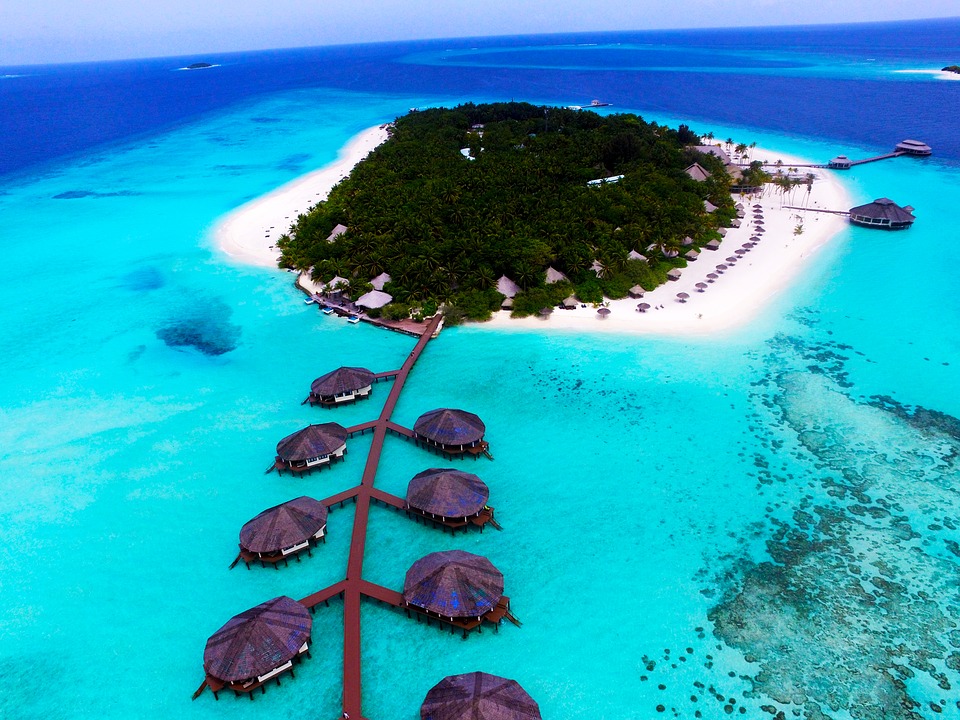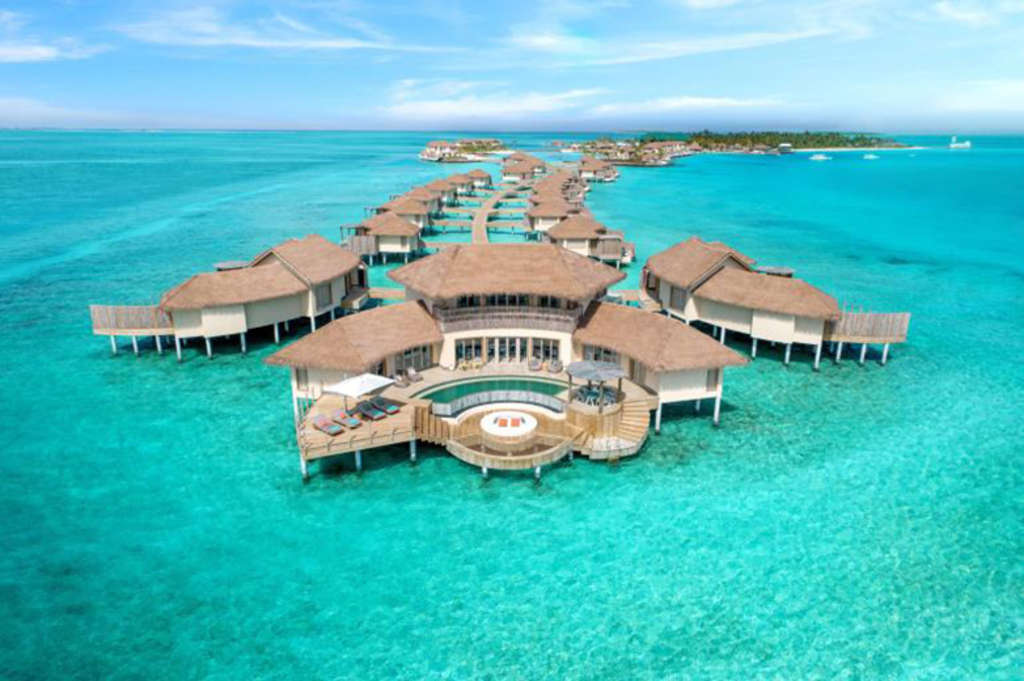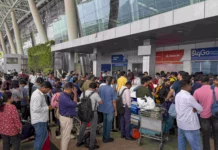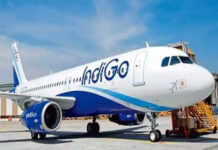The Maldives, a tropical paradise of pristine beaches, is an archipelago of 1,192 coral islands grouped into 26 coral atolls (200 inhabited islands, plus 80 islands with tourist resorts) in the Indian Ocean. They lie south-southwest of India and are considered part of South Asia.
The Maldives are well-known as a world-class diving destination with crystal blue waters teeming with a diverse array of ocean life. There are also plenty of private bungalows and resorts abutting the islands’ white, sandy beaches though in recent years cottages and apartments in the Maldives’ major towns have become more prevalent.
Of particular note is the islands’ capital, Malé, which sits at the epicenter of Maldivian culture and features dozens of colorful pastel buildings and great local restaurants. Its vibrant local life has been influenced by the cultures of adjacent nations like India, Thailand and regions of the Middle East, and yet remains wholly unique.
 The atolls are composed of live coral reefs and sand bars perched atop a 960-km submarine ridge, while the land features lush tropical vegetation with abundant local coconut palms. With an average ground level of 1.5 m above sea level, the Maldives is by far the lowest country on earth and as such has a very fragile ecosystem.
The atolls are composed of live coral reefs and sand bars perched atop a 960-km submarine ridge, while the land features lush tropical vegetation with abundant local coconut palms. With an average ground level of 1.5 m above sea level, the Maldives is by far the lowest country on earth and as such has a very fragile ecosystem.
Tourism is the largest economic industry in the Maldives. A tourist resort in the Maldives consists of an exclusive hotel on its own island, with its population entirely based on tourists and work force, with no local people or houses.
These islands developed for tourism are approximately 800 by 200 meters in size and are composed of sand and coral to a maximum height of about two meters above the sea. In addition to its beach encircling the island, each island has its own “house reef” which serves as a coral garden and natural aquarium for scuba divers and snorkelers. The shallow water enclosed by the house reef also serves as a large natural swimming pool and protects swimmers from the ocean waves and strong tidal currents outside the house reef.
The Maldives is renowned for its incredible diving opportunities. The crystal clear water and shallow lagoons are perfect for snorkeling, while the reef walls offer a kaleidoscope of sea life for more experienced divers. The Maldives have an amazing diversity of sea life, with corals and over 2,000 species of fish, ranging from reef fish and reef sharks to moray eels, rays and whale sharks. The island’s many sheltered lagoons also provide the perfect destination to enjoy an adventure-filled family holiday or a romantic getaway for two.
Things Not to Miss:
- Go scuba diving or snorkelling and explore the islands’ gorgeous coral reefs or view them from within the popular Whale Submarine
- Take part in water sports like windsurfing and water-skiing
- Charter a boat and go on a fishing expedition
- Explore Addu City, the southernmost city in the Maldives and its second largest town
- Plane hop from atoll to atoll by chartering an air taxi
- Spend the day touring the National Museum
- Take a picnic to the Sultan’s Park, located on the grounds of a former palace
- Eat traditional Maldivian food at the islands’ many hotel’s, or cafés
- Surf great waves just offshore
Other tourist attractions in Maldives are Diving Bluetribe Moofushi, Sun Island beach, Alimatha Island, Manta Point, Banana Reef, Grand Friday Mosque, Hukuru Miskiiy (Old Friday Mosque), HP Reef, National Museum, Veligandu Island beach, Bodu Mora, Hulhumale, Mulee Aage, Utheemu Ganduvaru, Biyadoo Island, Tiny Island Marine Conservation Centre, Kuda Bandos, Muraka Diving
WHEN TO VISIT
Due to their proximity to the equator, the Maldives experience consistently warm, even hot weather year round with temperatures generally hovering in high 80s. However, like most countries near and in the Indian Ocean, the Maldives experience a volatile monsoon season. Precipitation is at its worst between April and October. As a result, the best time of year to visit the Maldives is during the dry season, which runs from January to April.
LANGUAGES
The locals speak Dhivehi, with English widely spoken in areas frequented by tourists.
HOW TO REACH
There are frequent direct flights to Male from most international destinations including India, Sri Lanka, Dubai and major airports in southeast Asia, as well as an increasing number of charters from Europe.







